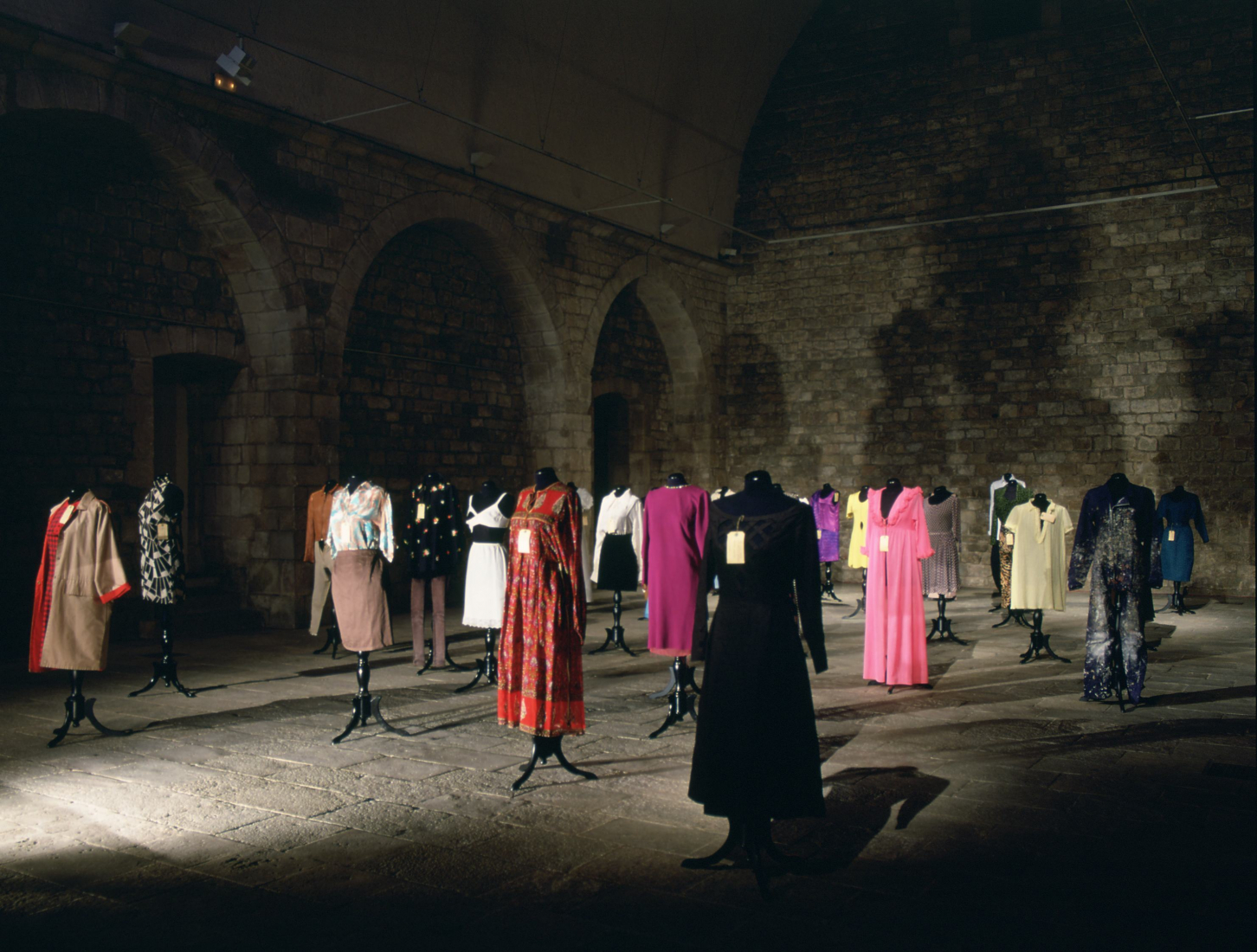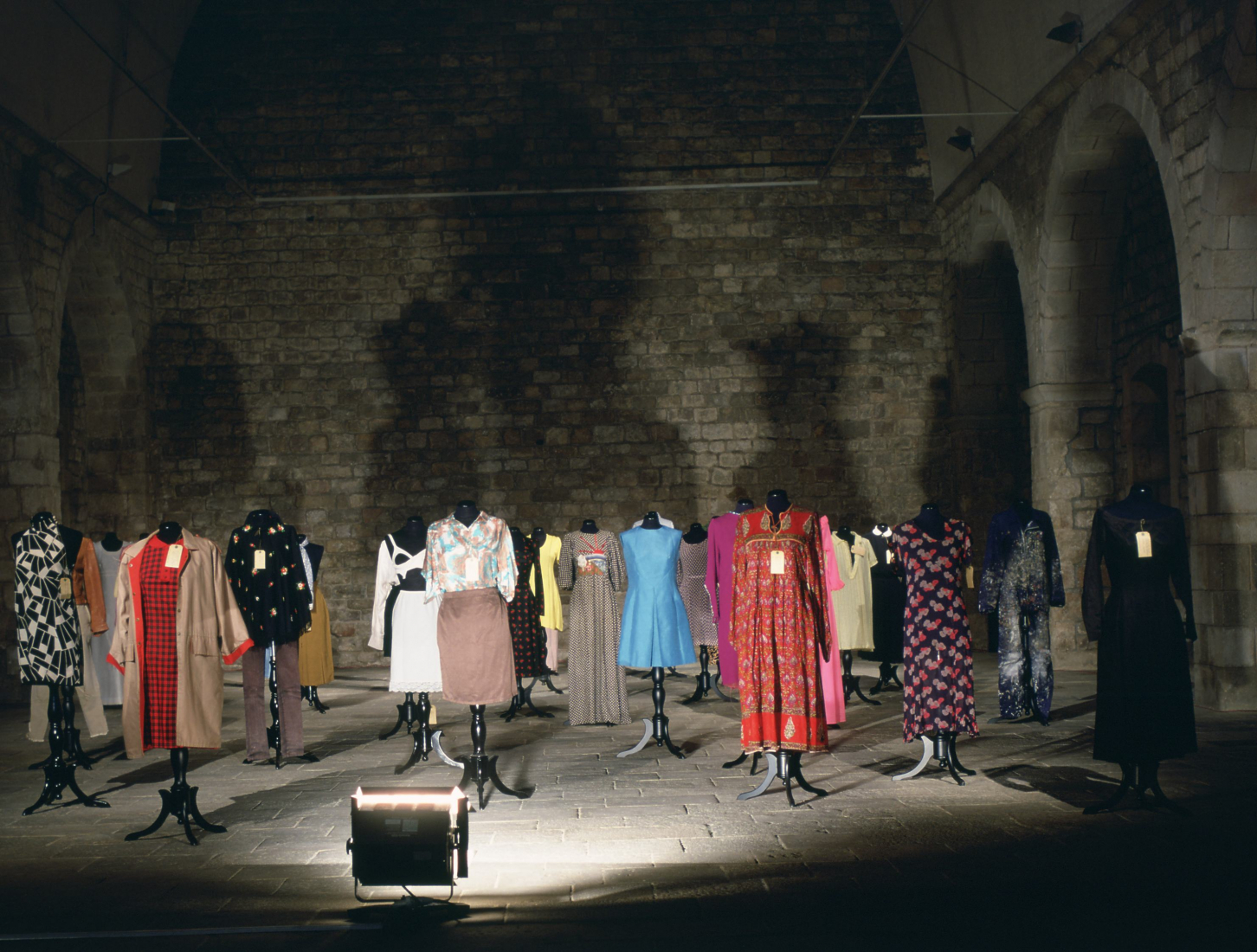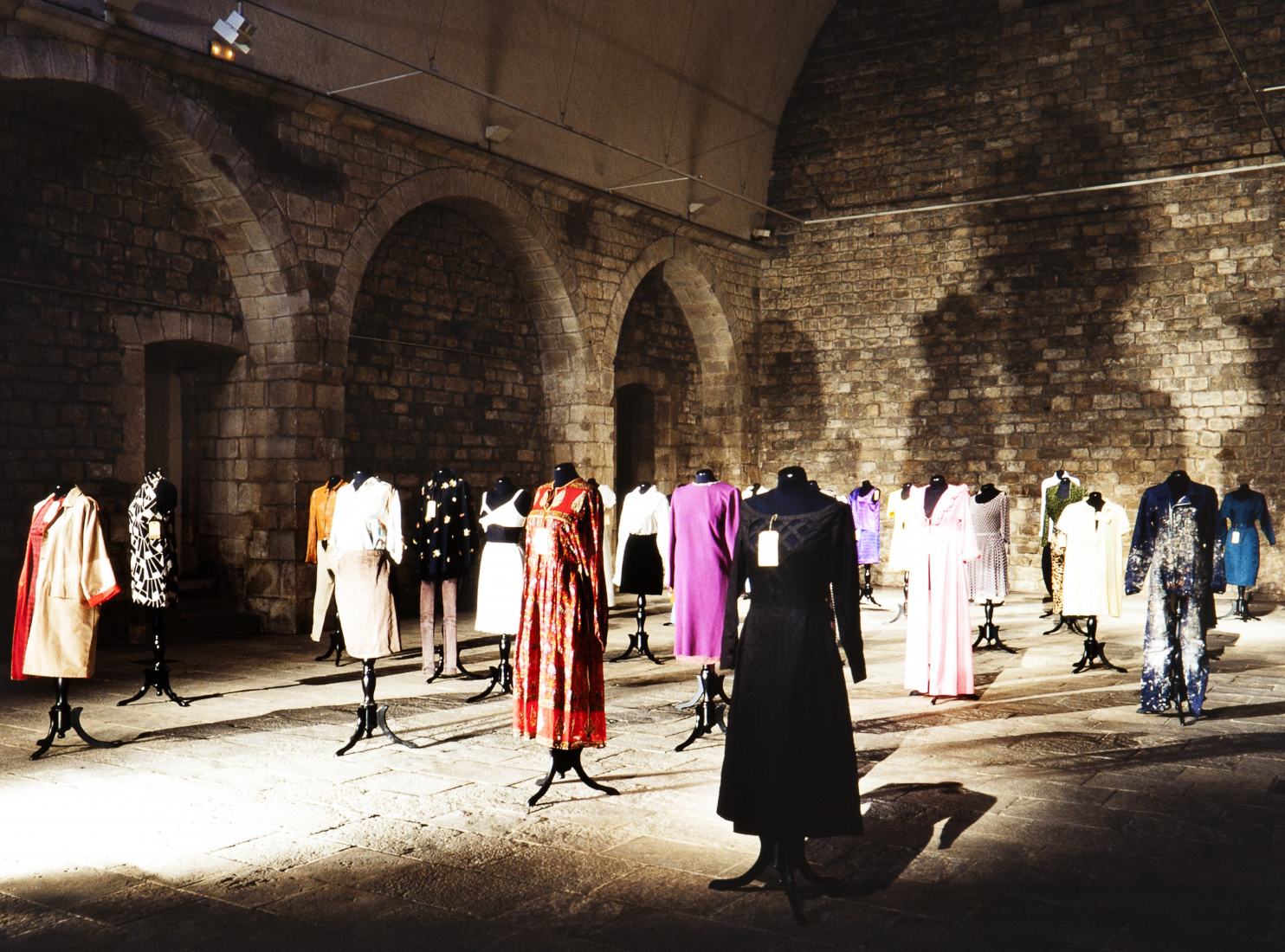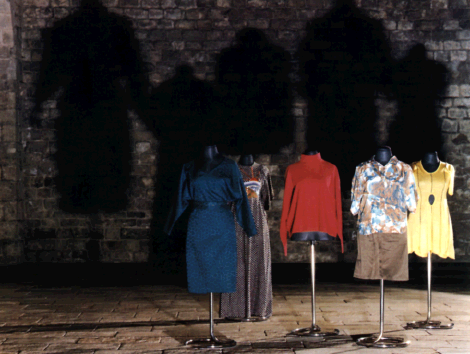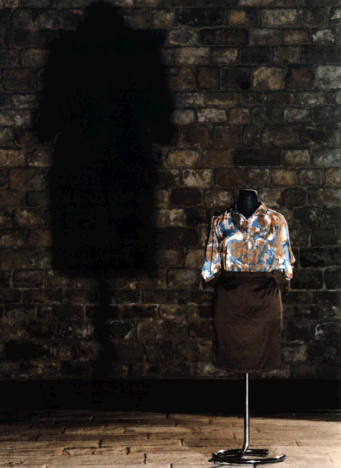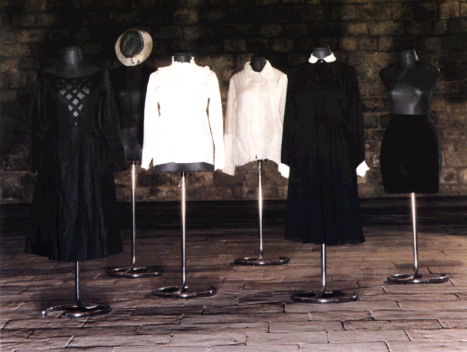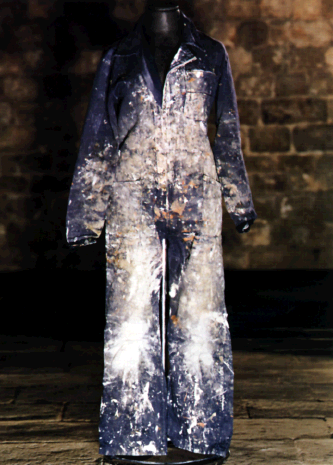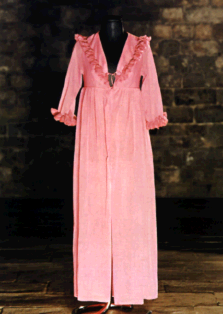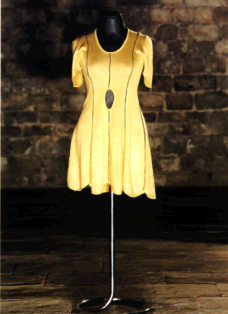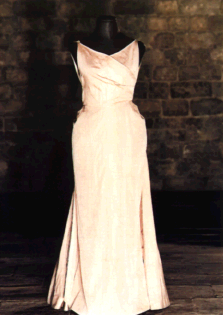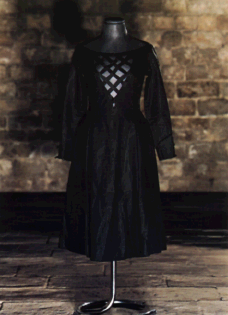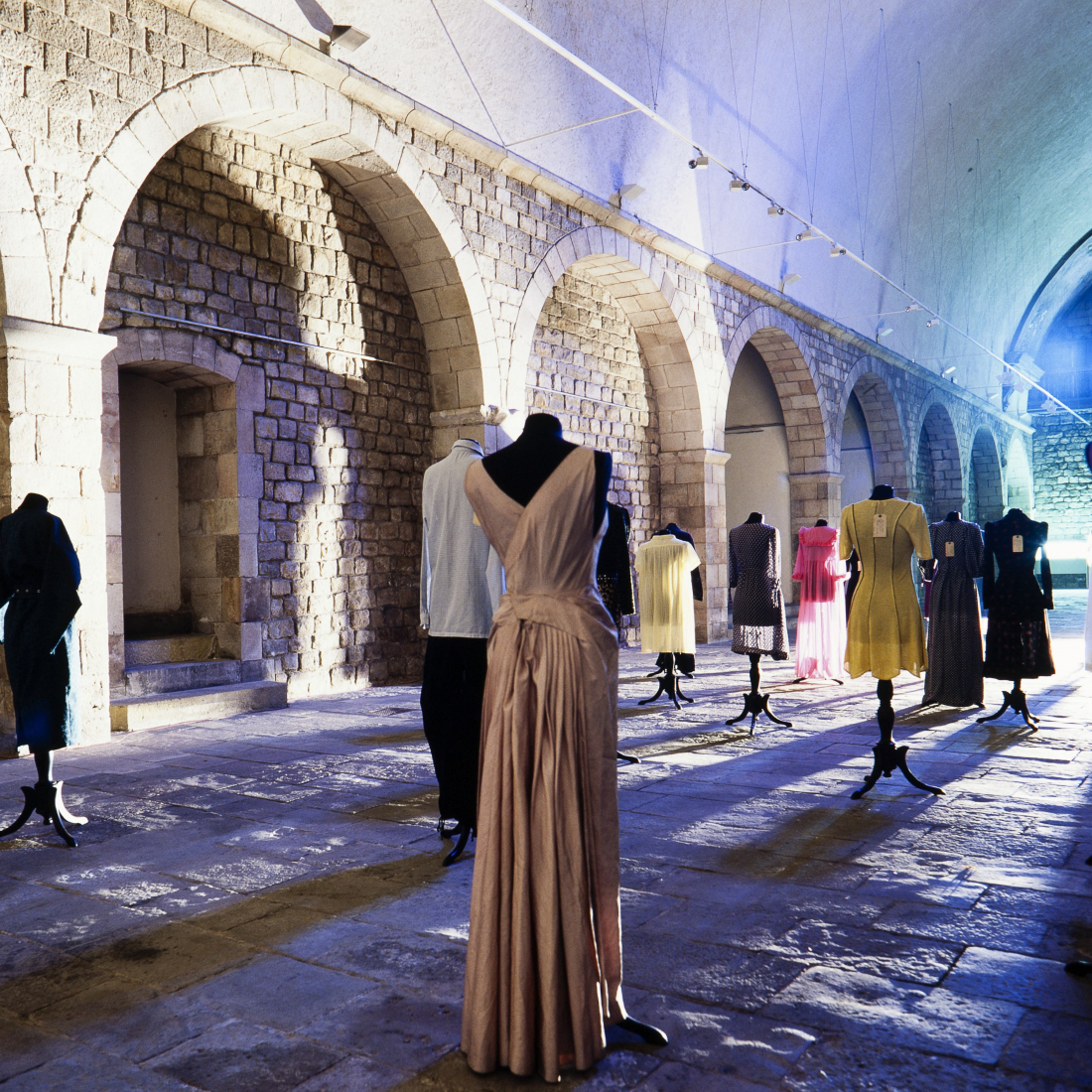Anònima
If on other occasions we have already pointed out how the three-dimensional devices have constituted one of the definitive shocks when it comes to thinking in what ways plastic arts could be disassociated from a good number of conceptual, categorical and even style limitations , we should now add that in the case of Anna Estany, all these devices also constitute a new model of demolition or crushing: that of specific and unilateral references in order to give way to the idea of the generic and, to a certain extent, to that of anonymity, despite being produced in an environment that could be described generically as chained paradoxes. Anna Estany proposes a projected and planned work based on the relationship mediated with a large number of women through a piece of clothing that has asked each one of them. We are, first of all, with simple object-based operations that are decontextualising, re-appropriating and with strong narrative referentials, on the one hand, and with the need for multiple visual and installation devices and complex ones, on the other, in order to be able to show everything in a very approximate way: at the same time, the idea of a continuous process, the impression of finding a job that does not end the idea of a continuous process, the impression of finding us with a work that does not end up having a specific final point and the idea of being in front of a work that is almost entirely configured from its own stage complexity, constitute the other perimeter elements that have just given a body What is the proposal of the artist, a proposal that has much more to do with existential circumvallations that are not merely visual problems or aesthetic situations.
The relationships of each one of the women, in addition to them, in a more or less generic sense, with the respective clothes belong unquestionably into the broad field of experience and, almost, of existence: but they also enter, and for this same cause, within the fields of fiction and the possibilities of representation. The narrative virtues of the relationships of each woman with each piece end up forming a thick discourse, also capable of being analyzed from other records of creation: literary, biographical, representational, allusive or fictitious. In the same way, we may also have to keep in mind that the sociological scope of the subject goes so far as to think that we are faced with a discourse and referents arising almost exclusively from the women's world, Consequently, a certain notion of identity and gender, a notion that, we must not forget, is subject to continuous transformations, changes and interrelations: its condition, its operation, its projection, its His construction, his story, in short. It is in this sense that we should not forget that many of the elements that have contributed to making art a human condition and the existence of the subject have been, precisely, all those multiple and strange aspects that have come to him from outside the artistic world itself and from its specificities: perhaps for that reason we should not lose sight either of the fact that elements of a non-artistic nature help to shape the final appearances of the works and bring us new possibilities of significant approximation.
This work by Anna Estany is located in quite complex and polymorphic areas of what we usually know as the installation: and not so much as if it were a specific genre -which is not in any way- but as the almost unique possibility of showing not only - or, rather, not exactly - what we think is a work but rather a whole work, that is, a process and its different phases and stages, only that all at once and with a specific space occupation and, yes, very specific. In this sense, the artist proposes as a sort of momentary breakthrough in a kind of long and laborious process that has led him to think about the relationship that is established between people - between women, in this cas- through the pretext of a piece of clothing. Although we are talking about the pretext, it is not too difficult to realize that a piece of clothing is precisely one of the elements that most commonly characterize people, and that more allegorical or metaphorical possibilities may have: beyond the inescapable Barthes formulations around the system of mode, clothing is also this more personal or intimate possibility of a second skin, a powerful substitute interchange, a revestimiento of the otherness, a certain camouflage or d An identifying trait, and in such a way that either by presence or absence, that is, by his own will or indifference indecision, ends up constituting a highly identifiable identification possibility. The clothing in this sense ceases to be material and becomes clothing, that is, becomes history and meaning will and representation.
The last works of Anna Estany have always been characterized by a spirit of a certain militancy in the formal and representational heterodoxy of their ideas, much more processual, on the other hand, that they are not concrete: just as now, it is always a certain chronological duration that ends up being developed in a certain space during a time segment, and the reflective and formal qualities of which involve different elements that allow for a complex and changing, ephemeral staging, and full of referentials in various fields of the experiential activity of people, and not just in matters of strict artistic nature. Anna Estany continuously subverts what we could call the conventions of fine arts both in terms of the concepts and the themes that she uses and puts in circulation as well as in regard to the little orthodoxy of the materials used in the works, materials, On the other hand, much more often associated with crafts than to the plastic arts. His three-dimensional work is sometimes a kind of reaction to the usual conceptions of the appearance of the body as a subject, for example, in contemporary sculpture: the artist's use of devices associated with speeches Corporal is from the records of its projection, from its shadow, almost double, in allegorical mechanisms much more subtle than simple physical allusions, and building a global metaphor on communication, identity and gender .
The artist's current work constitutes a process of research and a look at the elements that base a relationship and an investigation about the distinctive signs of people and their fictional abilities, bearing in mind that clothing, in this case, It ends up building a kind of shadow - almost as if it were a special auratic profile -, as a projection of the double itself, and that the union - its joint installation - shows more clearly than what really interests and that is really at the center of the reflection of the artist is more the idea of the work than its formal resolution, that is to say, that the simple anecdote of the formal characteristics of the materials and the elements used by the sample of the work However, along with a sound installation in which the voices build another fabric, parallel, another equally fundamental story, implies the work in this category as a symbolic exchange: there is no presence of singular because the references are generic, but they are so much that they also end up becoming individual experiences placed under the same roof, with no specific references to the genre. Every piece has a time, a life, a story, and it symptoms a space that is finally private, particular, dark, and interior, inward. The installation proposes, in short, to change some of the usual terms in the reception of the contemporary work of art and ask the viewer a real implication in the work: look instead of seeing, and listening instead of to feel.



